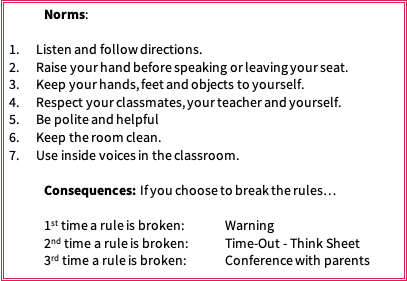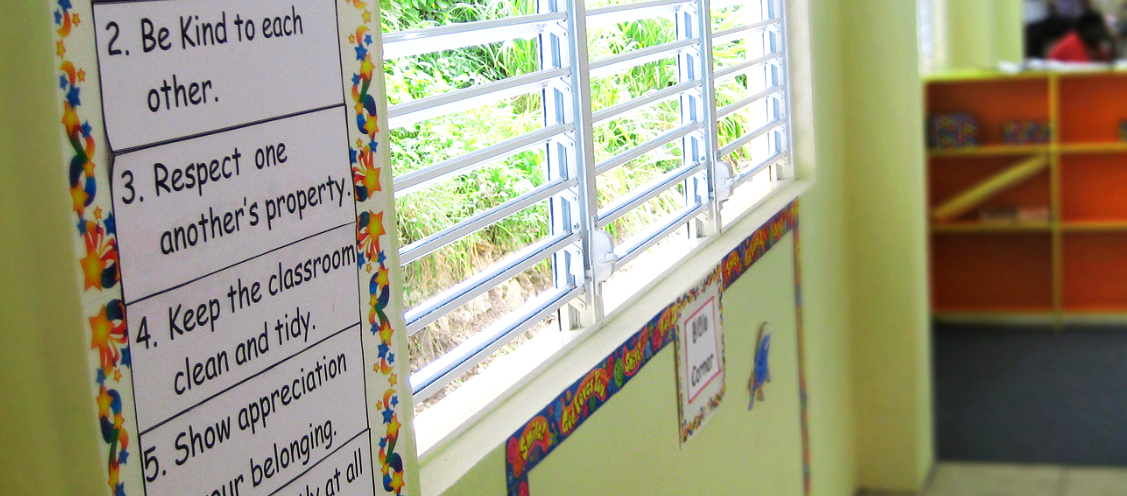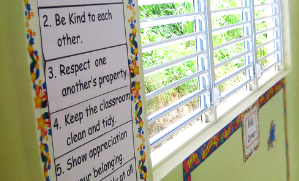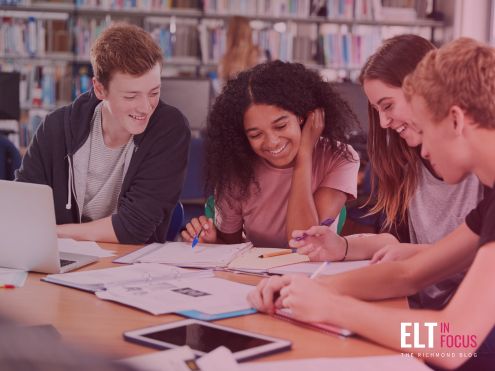What do routines have to do with a strong learning environment?
What kind of classroom environment do you have? Is most of your time facilitating learning or do you find that most of your energy is spent trying to get your students to behave appropriately? The following are two classroom scenarios. Which one is more like the one you teach in?
First scenario: The students enter the classroom and it explodes into noise and movement. They shout back and forth to each other as they go to their desks, they pick up and slam down their chairs before sitting down, they pick up papers on the floor and throw them at each other, they toss their backpacks on the tables, and in general ignore you. In the end, almost half of the class is habitually swallowed by their manipulations.
Second scenario: the students come in quietly, sit down in their seats without being directed, take out their materials from their backpacks, and wait for you to explain the task for the day.
What is the core difference between these two scenarios?
Many times, at being asked to change methodologies and use a more
student-centred model, teachers become angry. They are already at their
wit’s end, trying to get control of their students and in the end, never accomplish even half of what they had expected to each day. They insist that using any other methodology than direct teaching (teacher-centred lessons), will not work as even more chaos will ensue.
To these teachers - aside from trying to impress upon them that our primary function as teachers is not to teach, but rather to create environments where our students feel safe to learn - I always suggest that they would be much more successful if they established routines, norms and consequences, so that their students know what is appropriate and what is inappropriate. This helps the focus of each class become on learning, and not on correcting misbehaviour.
How do we begin? What routines should we implement? What norms and consequences are most appropriate?
Let's start with the first question.
To create an ideal learning environment, we need to envision it first - every movement and interaction with our students that we can think of - and then take the steps to make that a reality. We need to think about: how we want our students to enter the class, whether they need to sit quietly or begin working immediately, what they do to get our attention, what they do while their classmates are talking, what happens if they forget materials, how they get material for a task, how to turn in assignments, what do they do if they need to leave the room, if they don't understand instructions, etc.
These are all routines that help everyone to feel secure, so that the focus determinately becomes directed on learning because the mechanics are all understood, practiced, and second nature.
How do norms and consequences fit into strengthening the learning environment?
Coupled with routines are norms and consequences. Using these terms (instead of 'rules and punishments') is very powerful because it changes the connotation to one that is positive: these are the norms you've agreed to, and whoever chooses not to follow them, you accept the consequences.
It's a great idea to have the students sign a contract saying they'll follow these norms, and if they don't, they've then agreed to accept the consequences. According to John Hattie's studies of effect sizes of best practices, (2008, Visible Learning, effect size 0,81)1, having all this in place and enforcing these norms and consequences, raises learning significantly.
Here are some norms and consequences that you could use. They cover virtually all of the behaviours we usually target in the classroom:

You can download a sample Think Sheet here
Students have a very short attention span, and especially in the beginning you'll need to review, repeat and practice these elements so that your ideal classroom comes into being.
Types of routines
There are three types of routines, and to create the strongest learning environment, we need to address all three in our classrooms to give our students the most security. There are:
daily routines - how to enter the classroom, appropriate tone of voice, when to ask for help from the teacher or another classmate, schedule, handing out materials, snack time, cleaning up, what to do when you've finished a task, etc.
transition routines - going from one class to another or from one task to another, going to break/lunch or coming back from break/lunch, from getting instructions to beginning an activity, etc.
social routines - exchanging information with friends (interrupting or not), sharing equipment/pieces in games, attitudes in group sports, etc.
When all these are clearly outlined, modelled and followed by all the members of the class, students know they are in a place that they can trust, their limbic system registers positive messages (see past posts on the affective domain), and information flows into the brain more easily and effectively.
Incorporating questioning in our routine
Questions are very effective in raising consciousness of what we're doing, why and how. If we can embed them in our lessons regularly, we help our students to integrate higher-order thinking in everything they do.
These can be as simple as asking questions regularly at different stages of a task. For instance:
- after instructions are given for an activity you ask, 'What is the task?', 'What do you need to complete this task?
- while students are working, you ask, 'How many opinions have you taken into account?', 'Why did you decide to take this approach?
- as students are finishing, you ask, 'Who could you tell all this information to?', 'What would you do differently next time?'
Routines for online lessons
Finally, let's talk about routines for online classes. Is it possible? Sure it is, and it's very important. Online learning is the same as learning in a physical classroom in that we need to envision the ideal dynamics that will help us to help our students have an optimum learning environment, and we create routines, norms and consequences to create this environment.
The sudden switch last spring to online learning made certain dynamics of learning surprisingly complicated - elements such as: getting our students' attention when we were not even sure if they were connected, and if they were connected whether they heard us or not, asking for responses and then realising that they did not know where the chat function was, not knowing how to globally turn on or off microphones and cameras, or depending on students to do this. These, and many more, are all functions that can be resolved through routines that we create, practice and review whenever necessary.
Specifically, we can begin each class by:
- asking our students to write their name in the chat box. This establishes that 1) they hear us, 2) they know where the chat box is, and 3) they are connected and paying attention.
- reviewing the elements of the platform (posts, library, forums, objectives for the lesson and the unit, toggle switches for microphone, camera, hand up, etc.)
- following an established routine for asking questions, receiving material, turning in assignments, etc.
All this and any other details you realise were uncertain can be addressed, so that everyone knows what's expected and how to create a fluid dynamic between all.
Richmond is dedicated to finding and sharing key ideas that will help you to move forward towards innovation. Until then, we want you to benefit from resources we’ve been gathering that you can use online or in the physical classroom, to help your students to engage a bit more in their studies.









